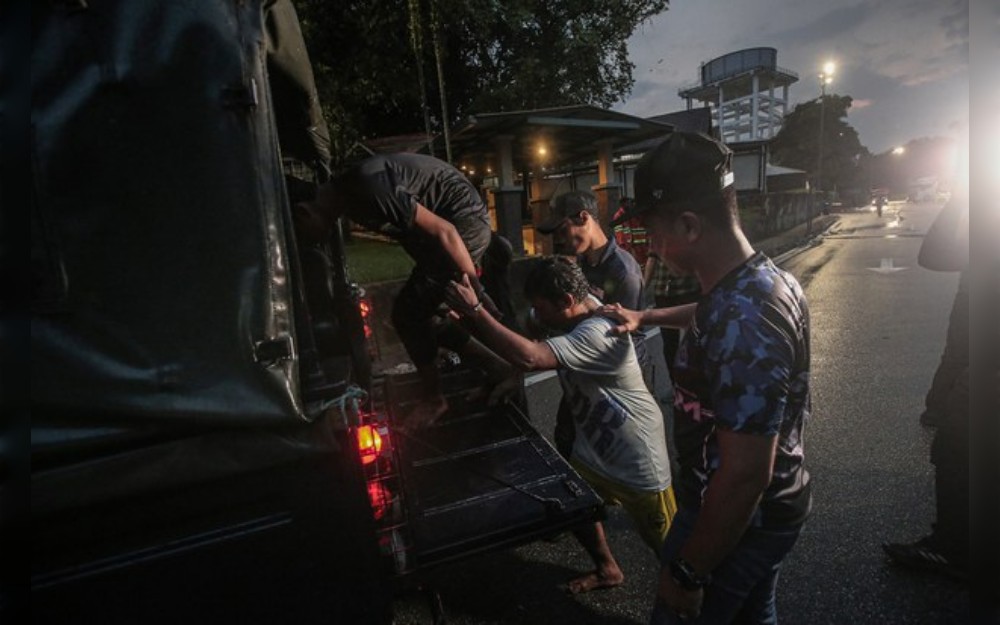Ahmad Mustakim Zulkifli and Ili Shazwani Ihsan, Kuala Lumpur

Malaysian immigration officials on Friday reported separating Rohingya from other detainees after 131 refugees in custody broke out of detention this week and one was struck and killed by a car.
Authorities also closed the Bidor detention center in the northern state of Perak, from where the group escaped on Thursday night. Those remaining in the center were transferred to other centers, Ruslin Jusoh, immigration director-general, told reporters on Friday.
Of those who fled, 115 were Rohingya, he said, adding the Myanmar Muslim minority members can sometimes get combative in groups.
Amid a riot on Thursday, the refugees fled by breaking down barbed wire fencing. They threw stones at unarmed immigration personnel at the security barriers, officials said.
“There is a tendency for them to act aggressively when there are too many of them,” Ruslin said, adding that some detainees had tried to escape earlier as well.
He didn’t say what sparked the riot, merely noting that officials were investigating.
Meanwhile, seven of the escapees were rearrested Friday evening, police said, after 300 personnel from various agencies were deployed to find them.
Ruslin also said security would be tightened at all 12 immigration detention centers in Peninsular Malaysia.
Thursday’s incident was the second of its kind in two years.
In 2022, six Rohingya including two children were killed by vehicles as they tried to cross a highway following their escape from a Penang detention center. More than 500 Rohingya who had been detained for two years had broken out after a pre-dawn riot.
One rights activist said detainees who were categorized as illegal or undocumented were actually refugees who escaped persecution and discrimination in their home country of Myanmar.
However, Malaysia is not a signatory to the 1951 Refugee Convention, which means the government does not recognize the Rohingya as refugees.
Still, activist Mahi Ramakrishnan urged the government to work with the United Nations High Commissioner for Refugees (UNHCR).
“If the UNHCR is allowed access to immigration detention camps, they would have done a refugee status determination process and registered them,” Mahi told BenarNews.
“Instead, we hold them without any legal recourse and no one even knows if they are being deported to Myanmar.”
Mahi said she and other activists expected a breakout because detainees at these centers are treated “like criminals.” She urged the government to adopt a system that allows safe passage for asylum seekers.
More than 50% of the 180,000 refugees in Malaysia are Rohingya. And in Peninsular Malaysia, 2,675 of 13,000 immigration detainees are Rohingya. At the center where Thursday’s escape occurred, 297 of the 566 detainees were Rohingya.
Another activist, Adrian Pereira, said refugees and asylum seekers should not be put in detention centers.
“What caused them to break out? This is a question,” said Adrian, from the North-South Initiative, an NGO that focuses on migrant, labor and refugee issues, to BenarNews.
“Malaysian detention centers have a very rotten history of being in a very bad condition. That needs to be investigated to find out the root cause.”
Copyright ©2015-2024, BenarNews. Used with the permission of BenarNews.














